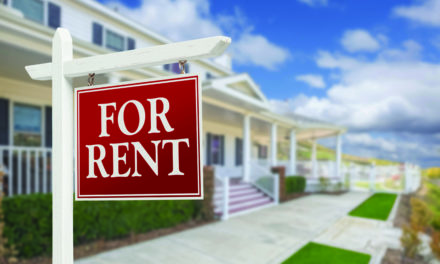By Ellen Ryan
The pandemic has afforded owners and operators the opportunity to rethink their outdoor amenity offerings.
At the Avant at Pembroke Pines in Florida, a resident wakes up on Tuesday, showers, grabs her sunglasses, then takes her laptop and coffee up to the co-working area. Setting up a video call on an umbrella-shaded table, she enjoys a warm breeze as she takes in the view over the pool.
“We see more co-working spaces where residents can sit, work, talk with others, and Zoom,” says Matt Darcy, vice president of construction at BH Management. “We’ve even converted some outdoor game areas to Wi-Fi-accessible spaces of this type.”
Outdoor amenities are always changing, and the pandemic has had its effects. More working from home is just one of them. Here’s some of what’s hot now—and how management companies are responding.

MAJOR TRENDS
Darcy says outdoor workspace pre-dates the pandemic because of greater parental leave and studies showing that employees are more productive when working from home. “That changes where people can live,” he notes, with large cities losing workers to rural and beach “Zoom towns.”
Another trend is multifunctional green space where kids can play, food trucks can park, and people can gather in various ways. The ideal: Open land that hosts, say, sunrise yoga, a Saturday afternoon band concert and an all-residents picnic supper. “That can give you a competitive advantage,” Darcy says.
In open areas, even small ones, “people can play catch, sit on beanbag chairs … you don’t specifically have to program every square inch,” says Ned Dodington, a Greystar director of development based in Minneapolis.
Hammock gardens are good for reading a book or watching kids romp, says Marcella Eppsteiner, senior vice president for Marketing, Training and Revenue Management at Mission Rock Residential. “We’ve leaned into more flexible spaces rather than having amenities really designed,” she says.
With natural wetlands and preserved areas on about 24 acres, Alliance Residential also strategically placed “pocket parks” around Broadstone Ingleside so every resident has one amenity just steps from home, whether it’s a grill station or a sculpture.
And especially where land is scarce, offering a variety of options on a rooftop, a middle floor – or both – is catching on. The Bower at Edina, a Class A Greystar property in a busy Twin Cities retail corridor, put its game and yoga “lawns,” pool and hot tub and more on the fifth floor and grilling, firepit and entertainment/lounge areas on the 18th floor, connected to the club space.
MAKING TOUGH CHOICES
The standard pool, playground and pet park will always be top draws. Even residents and prospects who don’t use a pool say they want one.
Management companies look at several factors in choosing amenities: industry trends, what residents want, what prospective residents ask for or look at, what competitors offer (or don’t), and the like.
What if a top-desired amenity is pricey, but an almost-as-popular choice costs little? How does a company choose?
Points of agreement include:
• What amenities does this demographic use most in this market?
• How much would rent have to increase? Would this market support that?
• How much space would this amenity use? How would its layout fit? What other amenities could occupy that same area?
• Could current B – be rehabbed to a B amenity or a B to an A–?
This process leads some companies to put in a smaller pool or designate green space where cornhole and bocce can be moved in and out. If a pool would be used only seasonally but the true goal is to strengthen community, Mission Rock figured maybe a grill/firepit/games area would do better. (In Denver, it does.)
Some choices these days aren’t so tough. Since the pandemic, sometimes “it’s about finding and elevating those small spaces outside that you might not normally utilize,” says Dodington. For instance, “sure, it’s okay to do chin-ups on that column – and here’s a chin-up bar.”
COVID has “allowed us to reimagine the possibilities of outdoor space,” Eppsteiner says.
“The demand is everywhere – on land, on rooftops, on a middle floor,” she says. “Residents will flock to whatever outdoor space you provide as long as it’s marketed well and flexible.”
LOCAL CONNECTIONS
Many companies aim for a local connection, a sense of place. For instance, Alliance Residential’s Broadstone Ingleside in Charleston, S.C., offers hammocks and “porch swings” produced in-state.
It also chose “a tactical-based outdoor rig that was customizable and complemented our indoor fitness items,” says Development Manager Kristen Vinesett, who points to a heavy military presence nearby. Greystar commissioned a 14-foot steel sculpture from a Minneapolis artist for the Bower at Edina’s entry. “Laden With Flowers” includes inviting magenta LED lights alongside a wooden bench, a fountain and the Promenade walking/biking trail. “One can walk through and feel like you’re in a dreamy garden even … when it’s well below zero,” wrote the artist.
Events, too, can build on amenities. Solana Lucent Station, a Mission Rock property in Colorado, has invited a local chef to turn out pies from its open-air pizza oven. He offered residents tips on using it themselves, leading to greater engagement overall.
FITNESS MOVES OUTSIDE
“Even before COVID-19, the functional fitness and CrossFit movements were driving enthusiasts toward outdoor exercise,” says Donald Santos, managing director at Alliance Residential for Carolinas/Mid-Atlantic.
“Fitness amenities are constantly changing,” adds Ned Dodington, a Greystar director of development based in Minneapolis. Especially after the pandemic, “we’ll probably see more focus on the outdoors.”
For now, some Greystar and BH communities are part of a trend in which fitness rooms open a wall, rolling out stationary bikes and other equipment for ventilation and a view.
Alliance Residential incorporated outdoor fitness options at Broadstone Ingleside without a lot of equipment (HIIT, yoga, weights).
Meanwhile, tennis is no longer what it was, so BH Management, among others, is converting tennis courts to pickleball “in every state we’re in,” says Matt Darcy, vice president of Construction at BH Management. “That’s an easy conversion, low cost and tremendously popular – a win-win all around.”
Ellen Ryan is a freelance contributor to Units Magazine. This article is reprinted with permission from the NAA.




